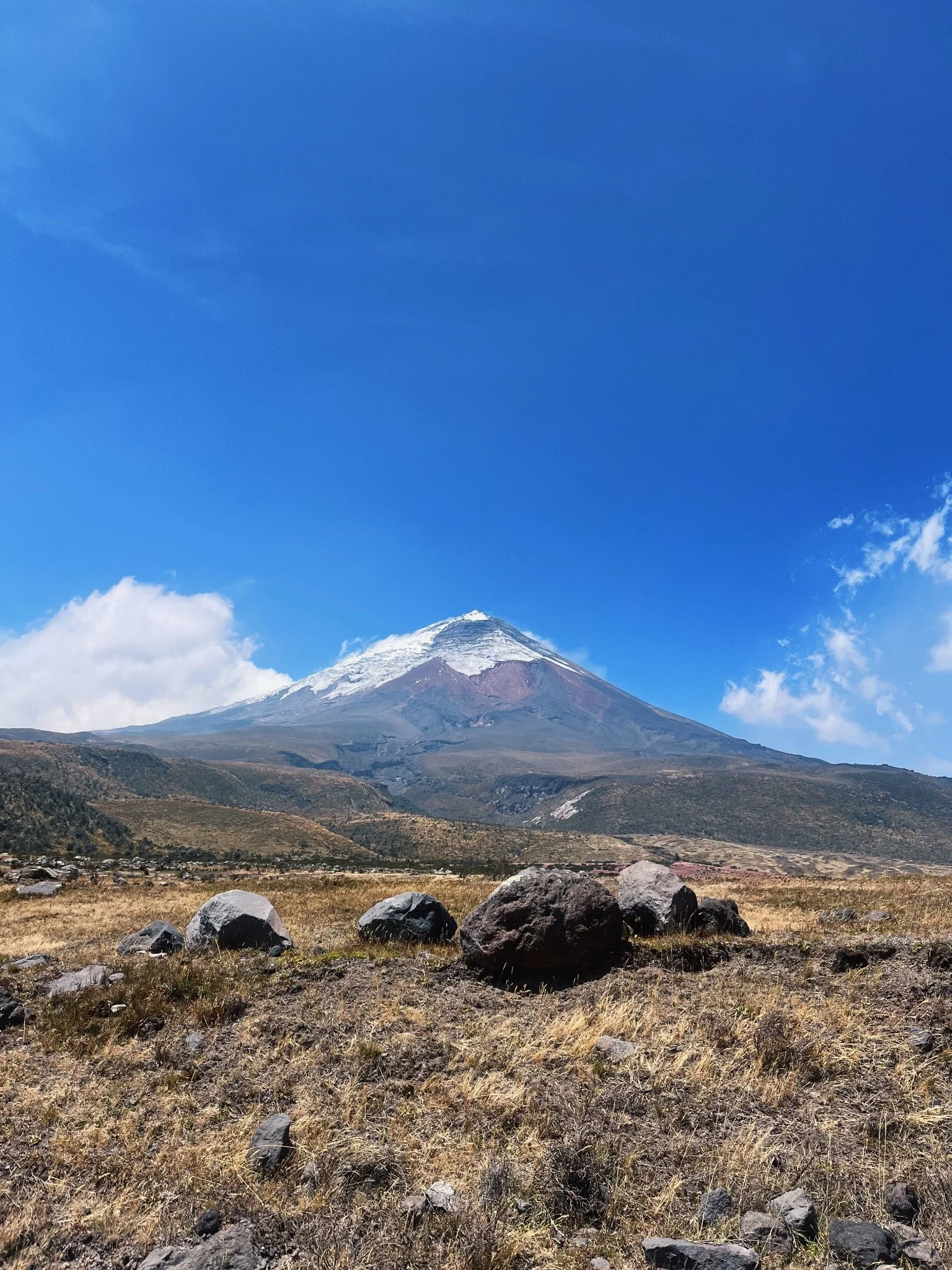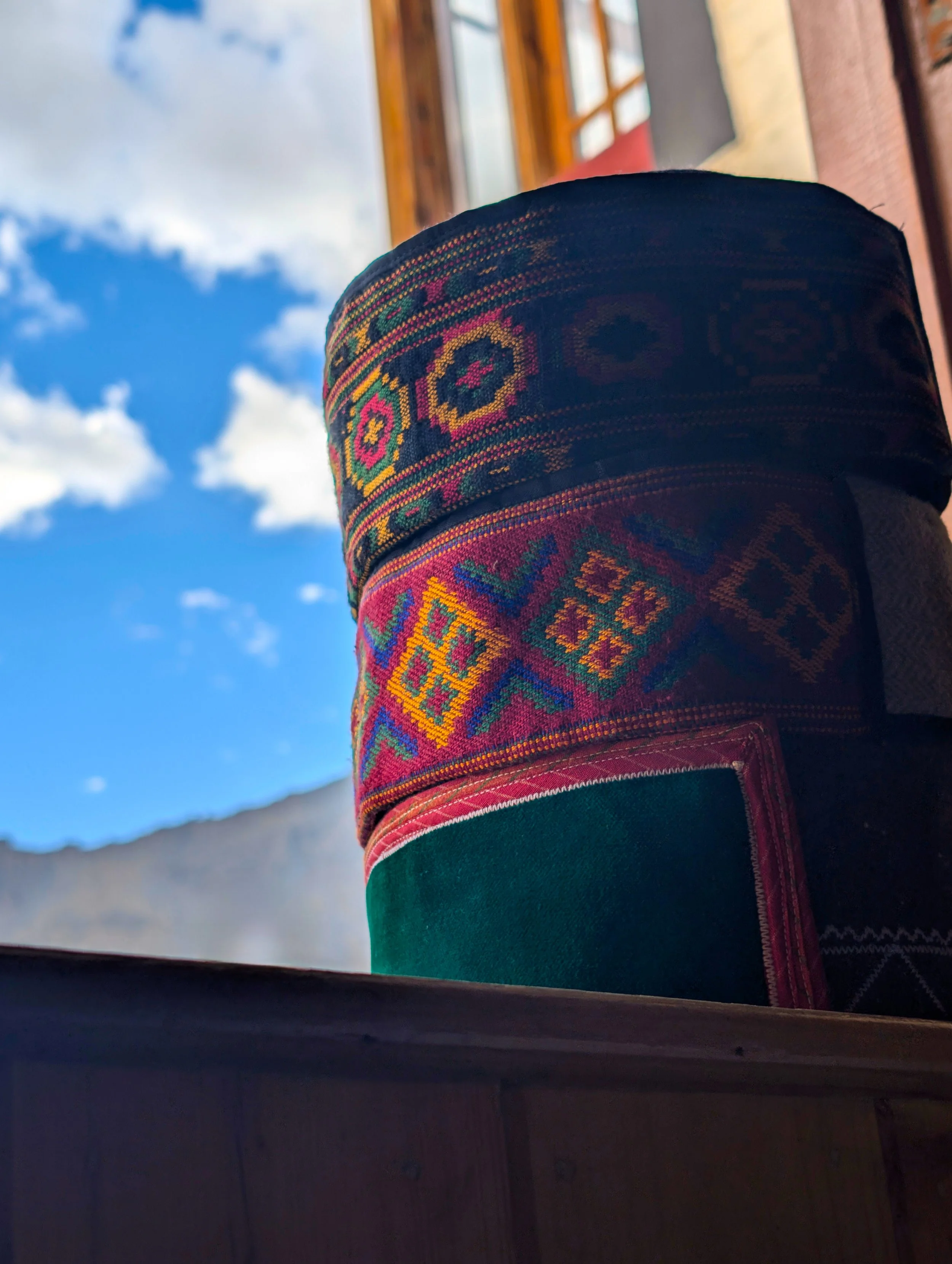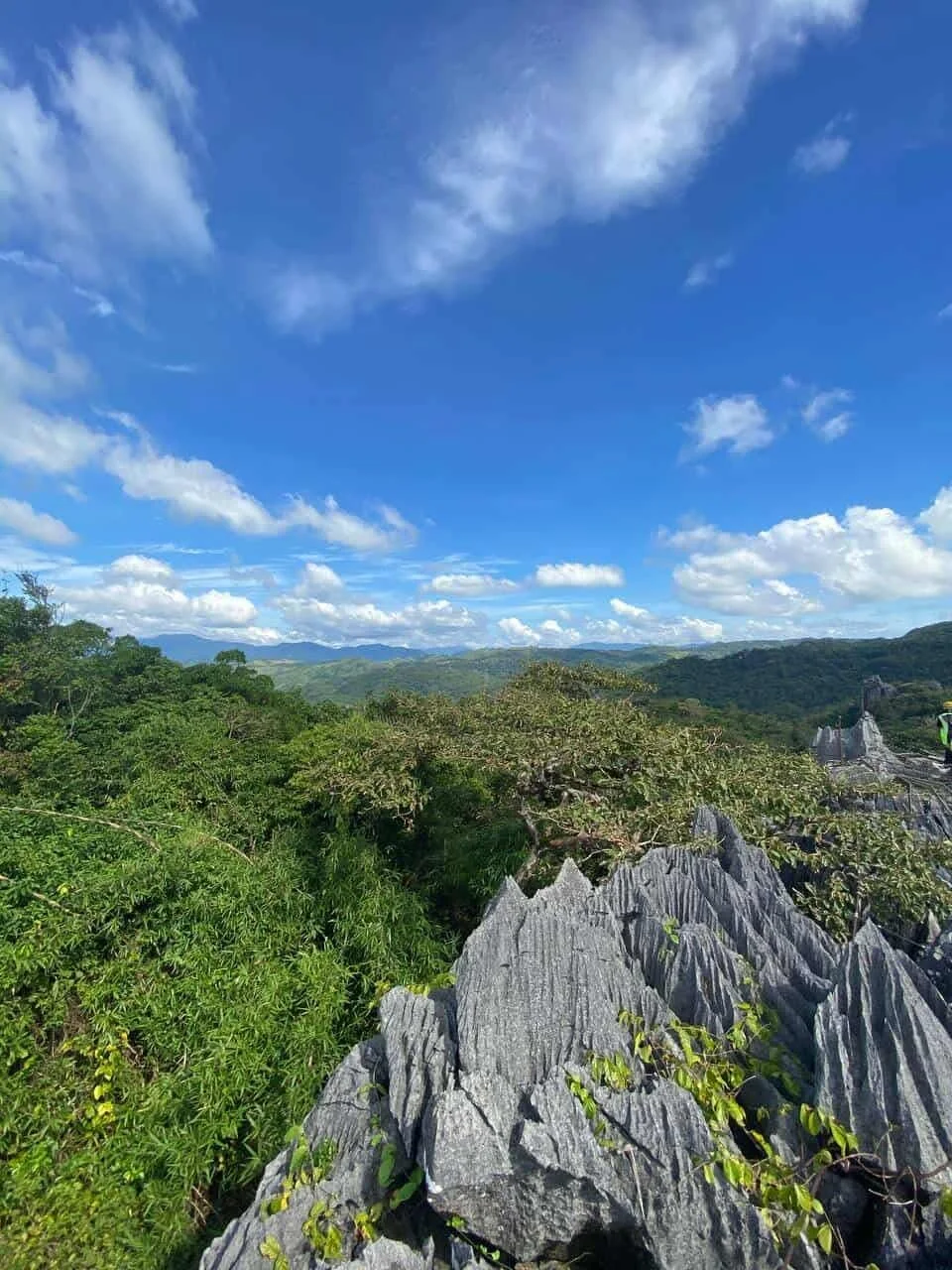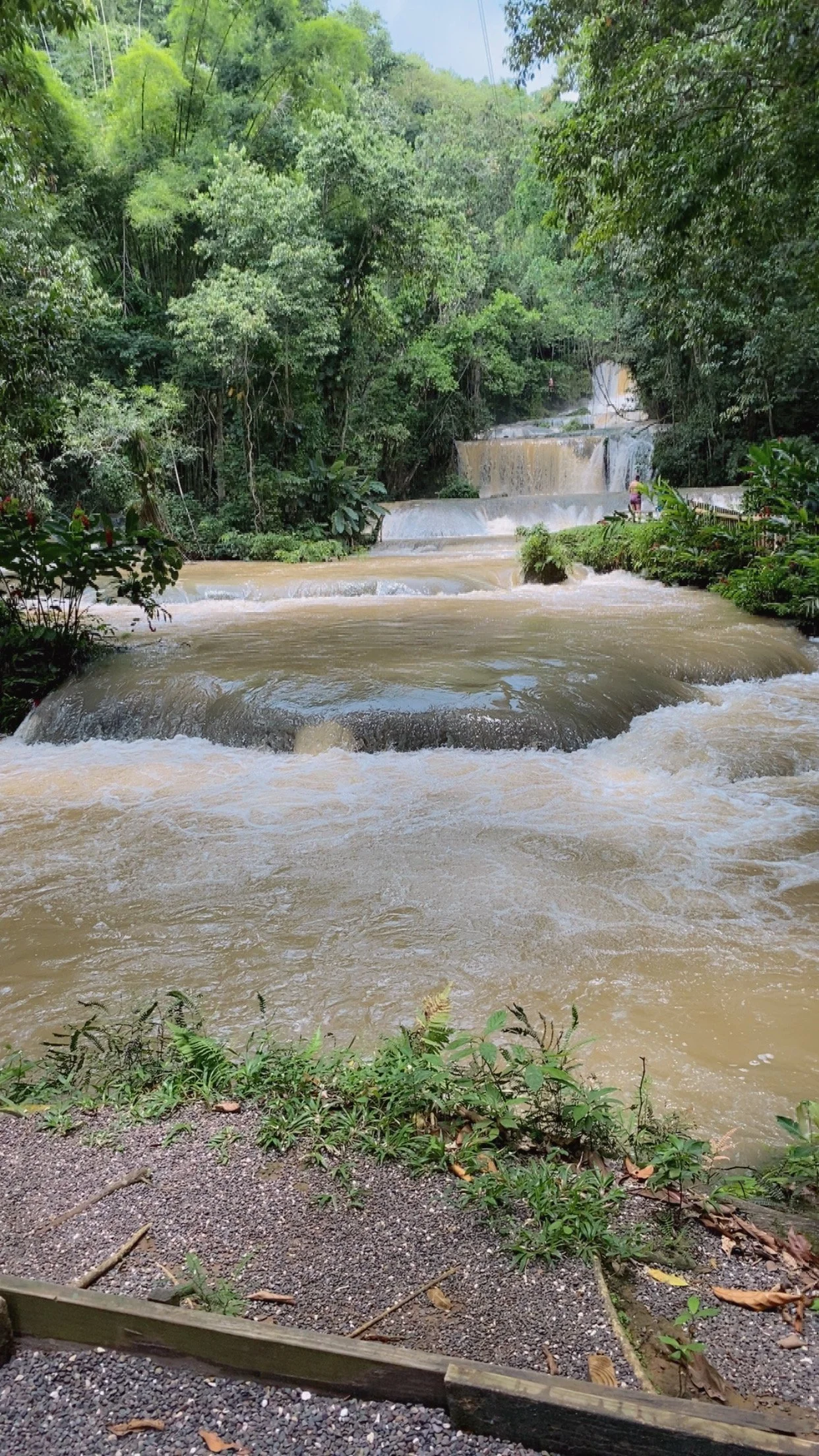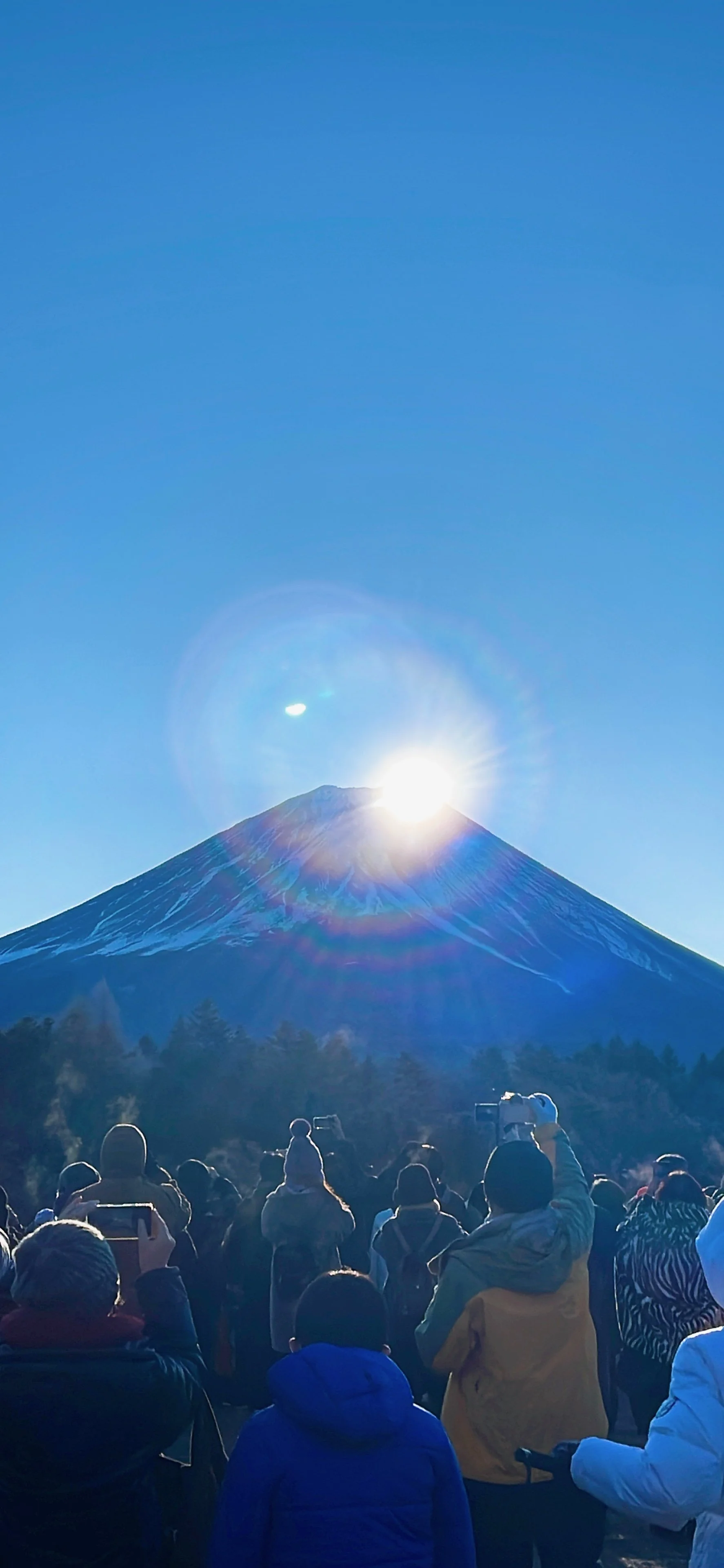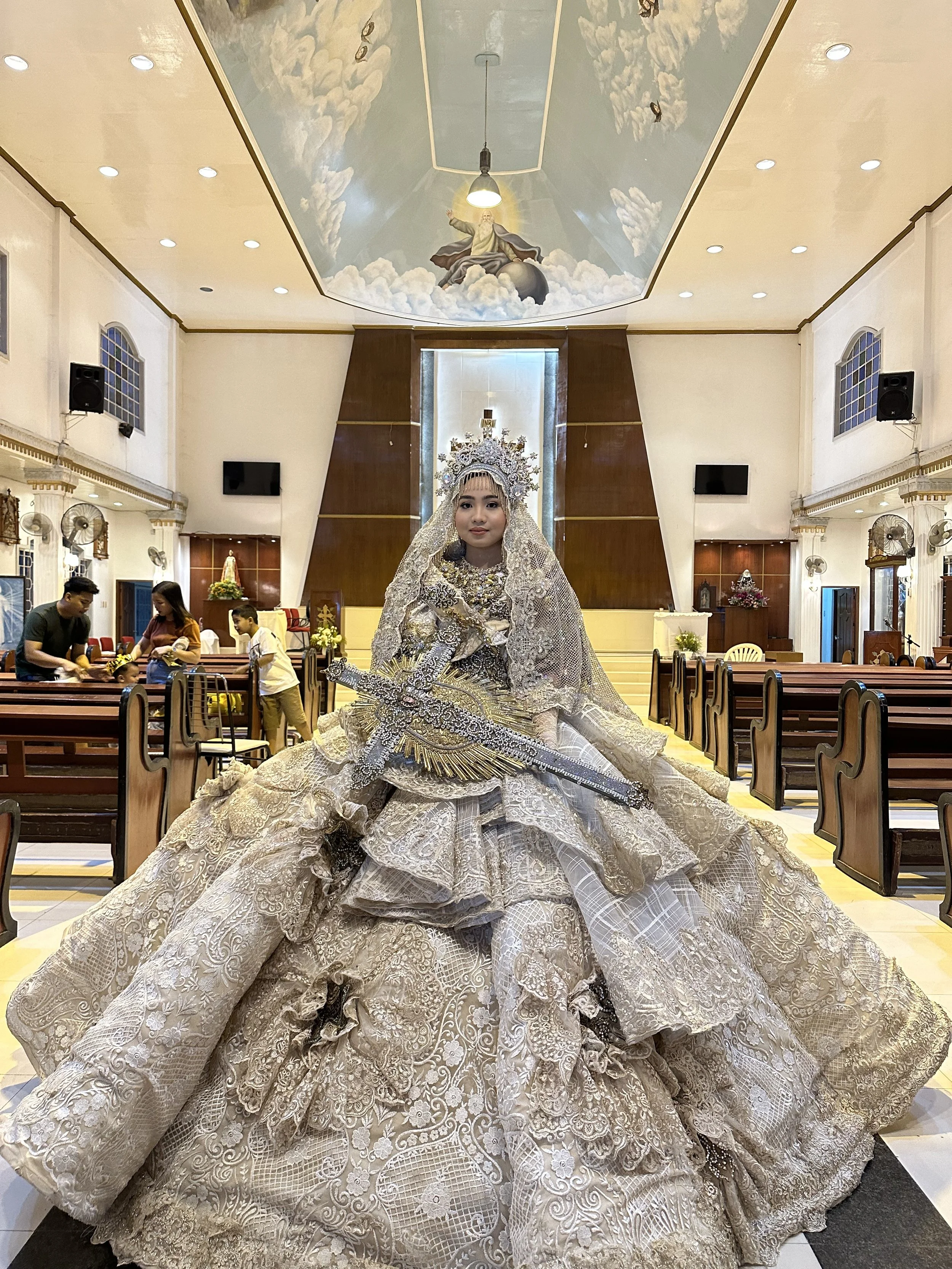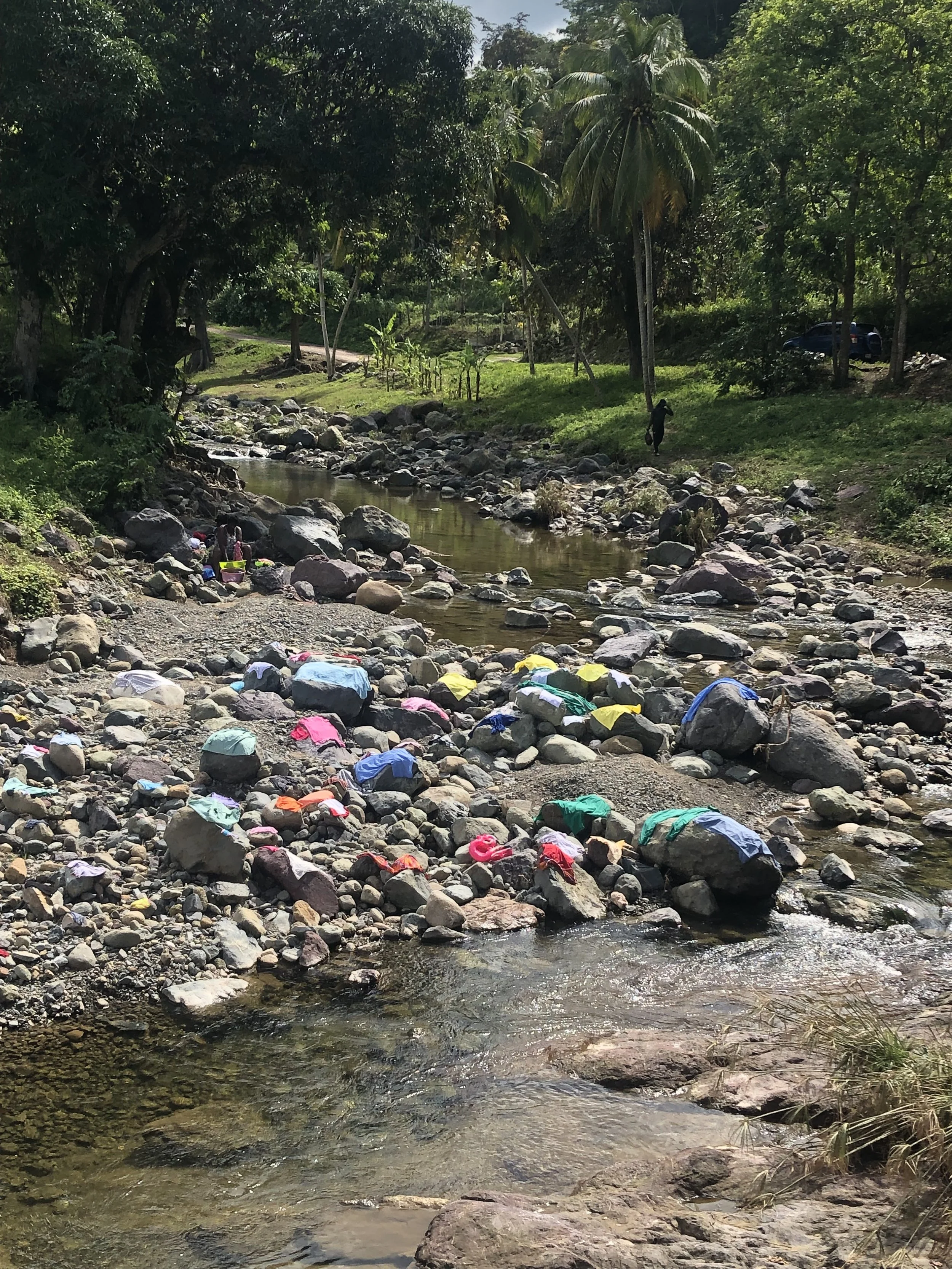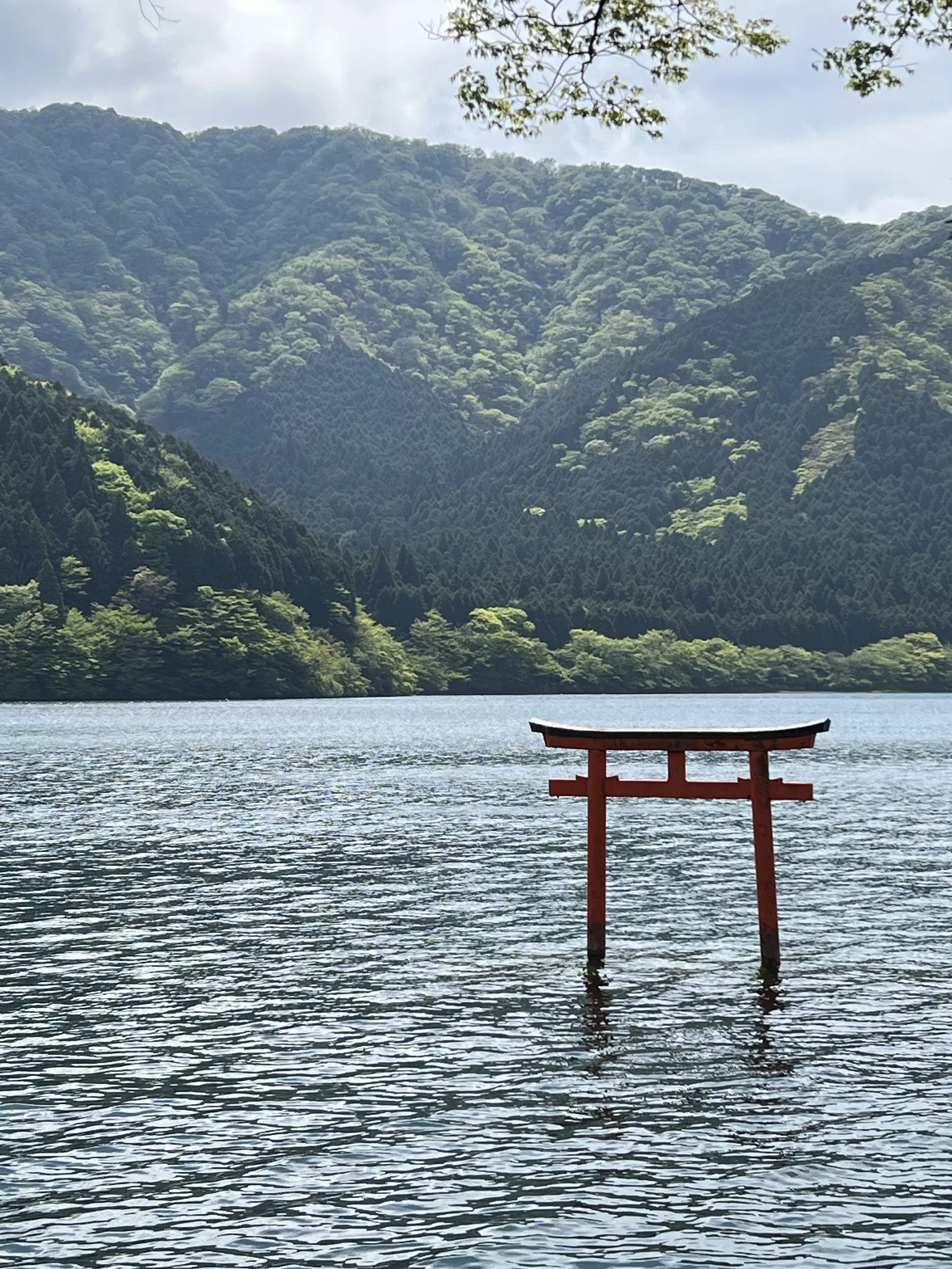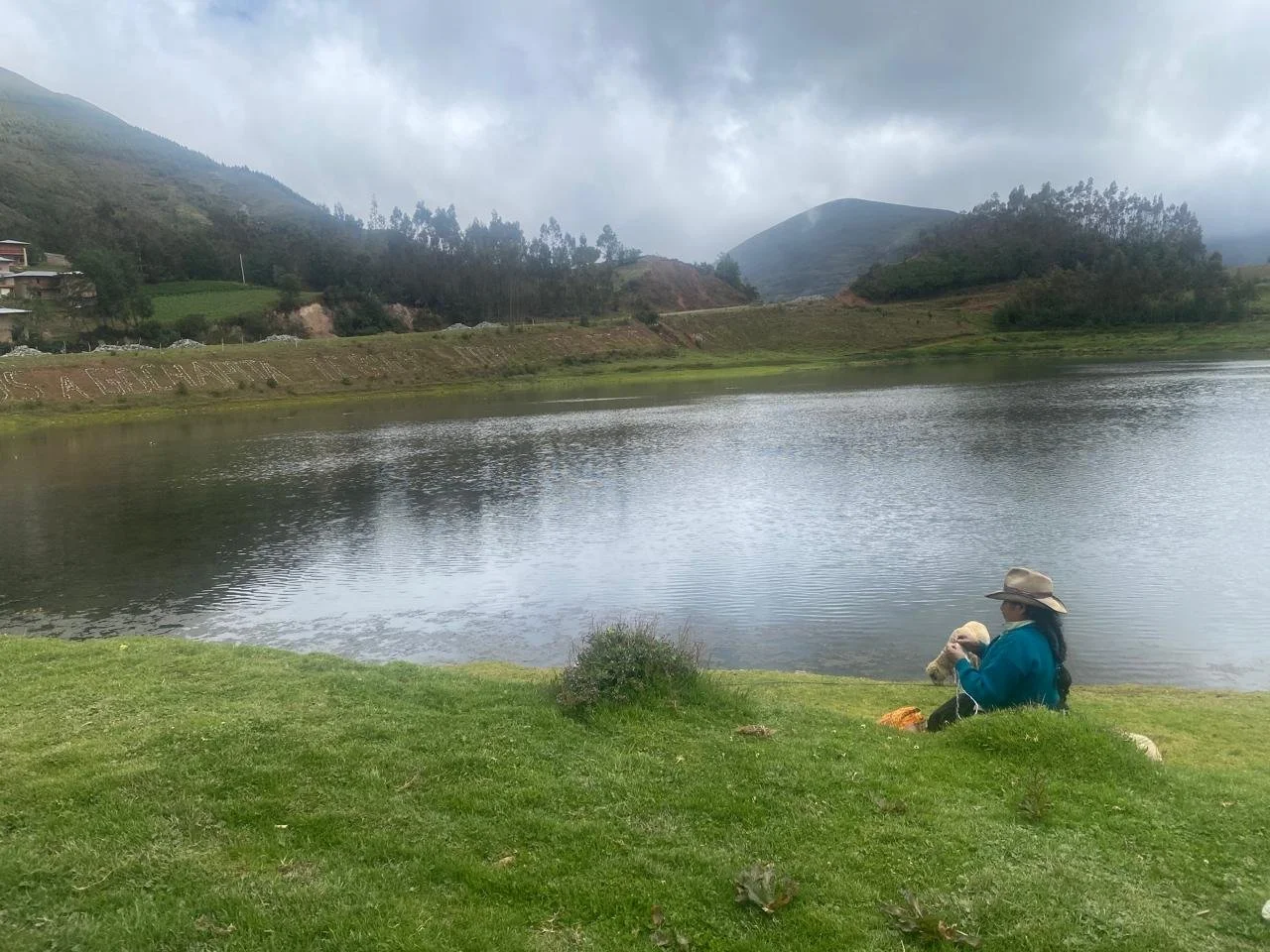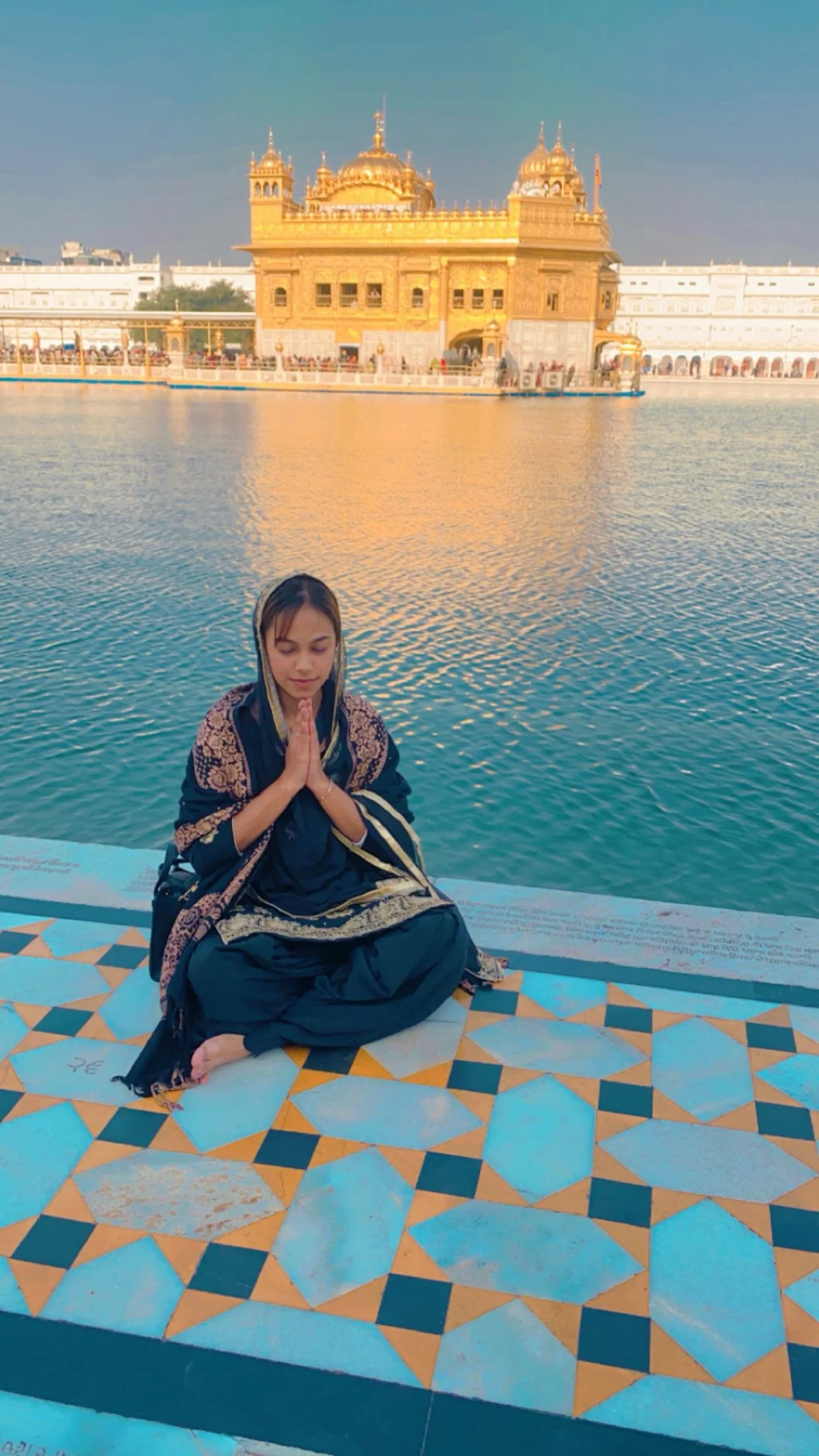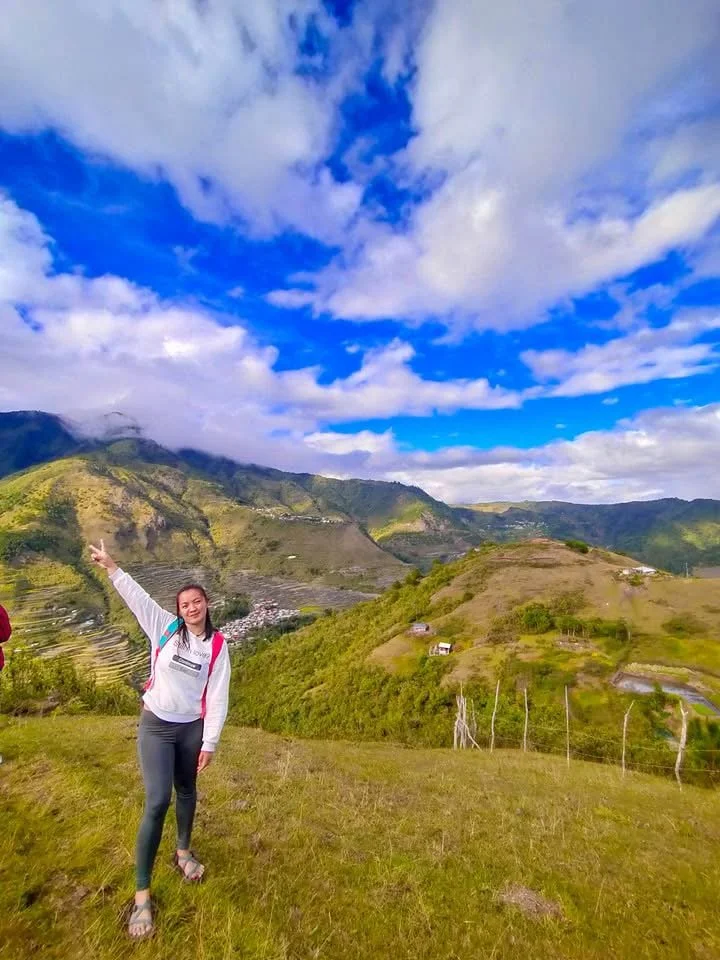International Education Week 2025
In recognition of International Education Week, a collaborative initiative of the U.S. Department of State and the U.S. Department of Education, we invited our exchange visitor alumni to submit photographs and accompanying captions that represent their cultures, such as cuisine, traditions, or architectural landmarks. The contest was organized to highlight global diversity and inspire educational travel to discover new cultures. The submissions reflect the cultural diversity and richness of our exchange visitors.
Congratulations to the International Education Week Contest Winner: Romina Belén Sarmiento Quilligana!
“I was born in Santo Domingo, Ecuador, a coastal city three hours away from where this photo was taken. Growing up, I learned that a three-hour drive could take you somewhere completely different: another climate, another landscape, another story. That is something you rarely see in other countries. Here, you can immerse yourself in different cultures, climates, and landscapes in just a day’s drive (or less). For me, this was the first time I saw the Cotopaxi; towering, silent, and impossibly grand. I felt as if I had stepped into an entirely different world.
It felt like standing before something so ancient yet so alive.
Something that didn’t just exist in my country; it shaped it.
In Ecuador we like to say we are “the country of the four worlds”: we are fortunate enough to be able to go from the warm of the Pacific coast, to the cold breath of the Andes, to the heartbeat of the Amazon rainforest. Growing up, I never realized how extraordinary that was until I started sharing my culture abroad.
This photo means a lot to me. You see, the Cotopaxi is rarely seen without clouds. Our elders say he is a sleepy, grumpy man who prefers to hide under a blanket of fog to not be disturbed him. On the day I took this picture, he revealed himself to us. Majestic, bright, and proud. That almost never happens.
My grandfather was born near where I took this photo, and he grew up hearing these legends from his elders. He passed them down to me, not just as tales but as treasures, as pieces of who we are as Ecuadorians. As stories that belong not just to the land, but to our family, our people. In Ecuador, listening to our grandparents and our elders is part of how we keep our culture alive. They teach us who we are long before we understand it ourselves. Their words travel farther than any road.
That’s what I hope to share today: the feeling of being connected to a place that is bigger than you, older than you, and yet, somehow, still yours. Yours to wonder, yours to love, and yours to protect. Ecuador may be small, but its spirit is immense. I hope that, through this picture, you can feel a little of what I felt in that moment: gratitude, wonder, and pride in the place I call home.”
Thank you to all our exchange visitors who shared their culture, a selection of which are shown below.
“In this photograph is a piece of my heart: my collection of traditional Pahadi Topis, the mountain caps from my home state of Himachal Pradesh in northern India. Each one comes from a different corner of the Himalayas, carrying its own colors, patterns, and stories. Placing them against the open sky felt natural, because that is how I remember home, calm and bright, with quiet tales woven into everyday life.
For someone who has never been to Himachal, these may seem like beautifully crafted caps, yet for us they carry a deeper meaning. They are symbols of identity and comfort. Each design reflects generations of craftsmanship, local legends, and the bond we share with our mountains. When someone wears a topi, it is never just clothing. It is a reminder of who we are and the community that shapes us.” - Saurabh / India / Intern
“These photographs reflect the essence of Ecuadorian culture: art born from our hands, our history, and the natural richness that surrounds us. They feature Napoleon Cabrera and Grace Dominguez, artisans from Salinas, Ecuador, who carry a legacy that transforms elements from the coast into pieces filled with meaning.
Their journey began with a small display board on the beach, where they sold crafts made from tagua, Ecuador’s “vegetable ivory.” Through dedication and talent, they expanded their work, opened their own shop in Salinas called “Artesanías Genesis”, and began incorporating marine materials such as mother of pearl, abalone, and spondylus. Each piece became a bridge between tradition and creativity, between nature and identity.
Their art has crossed borders: Napoleón represented Ecuador in Malaysia, and Grace was selected to participate in the 1st Ibero-American Craft Summit Puebla 2025. Their creations do more than adorn—they tell stories of resilience, roots, and the power of art to unite cultures.
The most wonderful part is that these two artisans are my parents. In one of the photos, I appear with my mother wearing one of her handcrafted jewelry pieces.
Sharing their work is my way of showing the world the cultural strength of Ecuador. Through them, I learned that international education begins by recognizing the value of our roots and carrying them proudly wherever we go.” - Tais / Ecuador / Summer Work & Travel
“The photo captures the interior of Süleymaniye Mosque, one of the masterpieces of Ottoman architecture. The mosque represents spirituality, art, and centuries of cultural heritage. Being there feels peaceful and grounding, and I wanted to share this atmosphere with the world.” - Simay / Turkey / Summer Work & Travel
“This photo captures the view from Masungi Georeserve, situated on the foothills of the Sierra Madre mountain range, the Philippines’ most majestic and awe-inspiring natural guardian. “Sierra Madre” means Mother Mountain, and standing here, I was overwhelmed by its magnificence—the peaks rise like silent watchers, their slopes covered in lush, emerald forests, and limestone formations carved by time and wind. The mist clings to the mountains like a gentle veil, while the sunlight dances across the ridges, painting a scene of both serenity and immense power. With my friends by my side, I felt humbled, small, and yet profoundly connected to the strength and life that this mountain range embodies.
But Sierra Madre is more than a scenic wonder—it is a protector of the Philippines. Recently, as Typhoon Uwan swept across the country, these mountains acted as a natural shield, absorbing much of the storm’s fury and protecting countless communities from devastation. In this sense, Sierra Madre is not just a mountain; it is a savior, one of the strongest defenders of our people and our land. Its forests and rivers are guardians, standing resilient through every storm, a silent testament to the enduring power of nature.” - Nelliza / Philippines / Summer Work & Travel
“Every drop of water that tumbles down these falls carries with it the stories of generations stories of peace, adventure, and connection. When you stand beneath the rushing streams, you feel both humbled and empowered. The sound of the waterfall drowns out every worry, and for a moment, you’re reminded of life’s simple yet powerful truths: that strength can be gentle, and beauty can be wild.
I want to share YS Falls with the world because it embodies what Jamaica truly stands for vibrance, resilience, and serenity. It’s not just a destination; it’s a feeling. It’s where locals and travelers alike rediscover balance, joy, and the rhythm of life. In a world that’s constantly moving, YS Falls invites us to slow down, breathe deeply, and reconnect with what really matters.” - Samantha / Jamaica / Camp Counselor
“Mount Fuji, Japan’s sacred peak, is crowned by the first sunrise of the year — a rare moment called “Diamond Fuji.” It symbolizes light and renewal. I captured this to share Japan’s beauty and spirit with the world.” - Yumiko / Japan / Trainee
This photo was taken at the Monument to the Sacred Heart of Jesus, located at the viewpoint on Cerro del Carmen in my hometown, Guayaquil, Ecuador. It’s one of my favorite places, especially at night. The view from up there is truly breathtaking — you can see almost the entire city glowing below. During sunset, the last rays of sunlight touch the statue, and it feels like half of it blends with the horizon.
To reach the monument, there’s a path of 164 steps, and along the way, there are fourteen reliefs that tell the story of the Via Crucis — the journey Jesus took before being crucified. Walking up while seeing each one feels like a calm moment of reflection, even if the city is full of life just below.
What I love most about this monument is that no matter where you are — from the north or the center of Guayaquil — you can often spot its silhouette standing tall. It’s a powerful figure that reminds me of the incredible artists and history behind my city. Every time I look at it, I feel proud of where I come from.” - Meidelin / Ecuador / Summer Work & Travel
“This photo captures a cherished moment from our Sta. Cruzan, where I had the honor of walking as one of the sagalas in this timeless Filipino tradition. Dressed in a gown that reflects grace and devotion, I was invited to join the procession in honor of Queen Helena’s sacred search for the Holy Cross. In a country known for its deep Catholic faith, the Sta. Cruzan stands as a radiant expression of our people’s devotion — blending faith, beauty, and community beneath the glow of lights and the fragrance of flowers.
As a sagala, I felt the privilege of embodying not just elegance but also the spiritual strength that binds us as a predominantly Catholic nation. Each step I took carried a prayer — for gratitude, peace, and unity — and reminded me that our faith continues to flourish through tradition and togetherness—the Sta. Cruzan is more than a parade; it is a living reflection of how devotion and heritage intertwine in the Filipino heart.” - Ryla / Philippines / Intern
“These photos/videos was taking in my “born ground” Lime Hall, Rock River Clarendon Jamaica . In my community this is our everyday life we wash our clothes in a bath pan at the river, hang them on river stones for them to dry. We also take our shower in the river that’s natural for us. One of the things I admire about my community is the nature of the river and gully that run across the road and the beautiful view in the hills and looking out especially when it’s night how gorgeous the light in the city are. I felt it was empowering to share this as it shows the reality of my culture, my lifestyle and my beautiful community. I’m proud of where am coming from.” - Maxine / Jamaica / Camp Counselor
“Japan has long maintained Shinto, an indigenous belief system centered on the veneration of nature and ancestral spirits. When Buddhism and Taoism were introduced from the Asian continent in ancient times, these traditions gradually merged with Shinto, giving rise to uniquely Japanese forms of spirituality such as mountain worship and Shinbutsu-shūgō, the syncretism of kami and buddhas. Throughout its history, Japan has absorbed influences from a variety of religions, adapting to change while maintaining a sense of harmony. I believe this dynamic yet balanced evolution has endowed Japan with a distinct and compelling cultural character.” - Ryoko / Japan / Trainee
“A crucial part of our culture is our folkloric dance and Dominican art, which transform tradition into vivid colors and expressive forms, inspired by the carnival that reflects our creativity and history.” - Exciel / Dominican Republic / Summer Work & Travel
“The Andean landscapes captured in the photos show rolling green hills, a serene lake, and open pastures where animals graze freely. These places are not only visually stunning but are also sources of livelihood, cultural meaning, and collective memory for the people who inhabit them. One of the photos shows a woman sitting by the water with her sheep—a simple moment that reflects the profound connection between Andean communities and their natural environment.” - Monica / Peru / Summer Work & Travel
“Nauryz is far more than just a holiday. It is a profound cultural marker that embodies the essential Kazakh values of unity, hospitality, and respect for nature’s cycle. It is traditionally a time for extensive community gathering, where families and friends visit each other, offer warm wishes, and share the customary "Nauryz Kozhe" soup, a symbolic dish made of seven ingredients representing abundance. This celebration is deeply rooted in our centuries-old nomadic culture, emphasizing the importance of communal support, generosity, and renewal.” - Anel / Kazakhstan / Summer Work & Travel
“This meal represents where I come from the Northeast of Thailand, my home, Isaan. In my hometown, we often share food like this with our family, sitting together on a mat, talking, laughing, and enjoying the moment. The grilled snakehead fish was often caught by my father, while my mother made spicy papaya salad with her hands spicy, yet full of love. We eat it with fresh vegetables, rice noodles, a boiled egg, and small field crabs from the rice paddies. Everything is simply served on banana leaves. But for me, it’s not just food it’s a memory of family warmth, unity, and sharing.” - Pathompon / Thailand / Intern
“The Golden Temple, or Sri Harmandir Sahib, is a sacred place in Amritsar, glowing with golden light and reflected in the calm waters surrounding it. It represents the spiritual and cultural heart of India, teaching faith, equality, love, and selfless service to all. I want to share it with the world because it shows the true beauty of India, a place where hearts are kind, people come together in harmony, and hope shines brighter than gold. Visiting the temple fills the soul with peace, and its message of love, compassion, and unity is something everyone should experience.” - Nav / India / Summer Work & Travel
“Discovering Kalinga: The Heart of the Cordilleras
Nestled high in the northern mountains of the Cordillera region lies Kalinga, a province that captures both the spirit of adventure and the warmth of tradition. As someone who grew up in this mountainous countryside, I’m proud to call this place home — where culture, nature, and history come together in harmony.
For me, Kalinga isn’t just a place — it’s home. It’s where the mountains meet the sky, where every path tells a story, and where traditions continue to thrive.
If you’re seeking adventure, culture, and genuine smiles Kalinga awaits you. Come and experience the heart of the Cordilleras! 🇵🇭” - Kristine / Philippines / Intern

